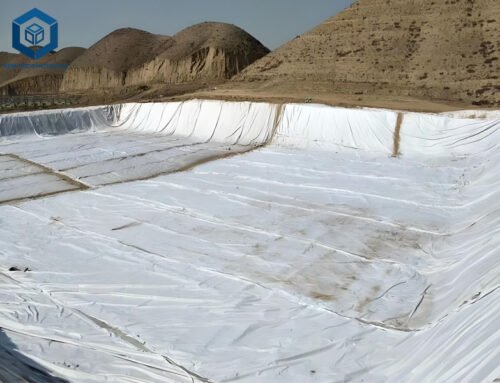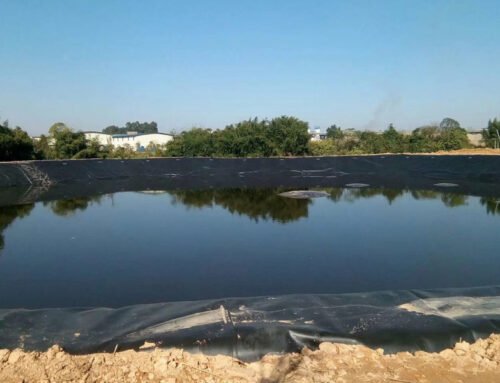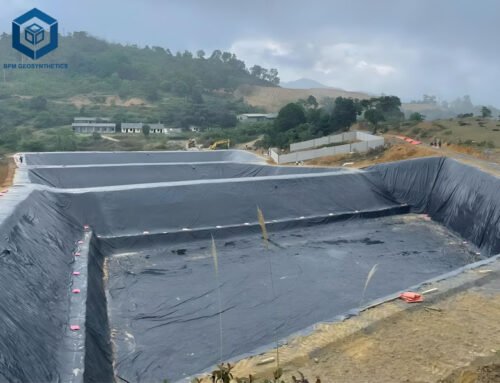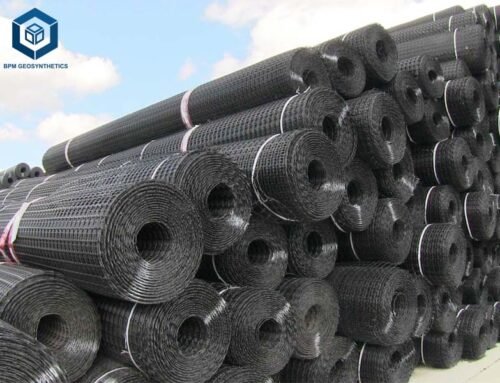Geogrids are indispensable geosynthetic materials in modern civil engineering, providing robust solutions for soil stabilization, reinforcement, and erosion control. With global infrastructure spending projected to reach USD 9.5 trillion by 2030, driven by urbanization and sustainable construction demands, geogrids are critical for projects like road construction, retaining walls, and landfill management. According to a 2024 market report, the global geogrid market is valued at USD 1.29 billion and is expected to grow to USD 1.97 billion by 2032 at a CAGR of 4.7%. Understanding geogrid cost per square meter is crucial for project managers, engineers, and contractors aiming to optimize budgets while ensuring structural integrity. This comprehensive guide delves into the factors influencing geogrid costs, provides detailed pricing data, specifications, and actionable insights to help you make informed decisions for your next project.
1. What Is a Geogrid?
A geogrid is a geosynthetic material with an open, grid-like structure designed to reinforce soils and similar materials. Made from high-strength polymers like polypropylene (PP), polyester (PET), or high-density polyethylene (HDPE), geogrids enhance soil stability by distributing loads over a larger area, reducing settlement by up to 30% and increasing load-bearing capacity by 20–40% (ASTM D6637). Their open apertures allow aggregate materials to interlock, creating a composite system that improves structural performance. Geogrids are widely used in civil engineering applications, including road construction, retaining walls, slope stabilization, and landfill liners, offering cost-effective alternatives to traditional methods like concrete or over-excavation.
Types of Geogrids
Geogrids are categorized into three main types, each with specific applications and cost implications:
- Uniaxial Geogrids: Strong in one direction (machine direction), with tensile strengths of 20–200 kN/m, ideal for retaining walls and steep slopes. Price range: $0.50–$4.00/m².
- Biaxial Geogrids: Provide strength in two directions, suitable for road bases and pavements, with tensile strengths of 15–80 kN/m. Price range: $0.50–$3.50/m².
- Triaxial Geogrids: Offer multi-directional reinforcement for complex projects, with enhanced load distribution. Price range: $1.50–$5.00/m².
In 2023, biaxial geogrids accounted for 45% of global demand, driven by their versatility in road construction.
Key Specifications and Parameters
Geogrid performance hinges on several technical parameters that influence pricing:
- Tensile Strength: Ranges from 15–200 kN/m (ASTM D6637). Higher tensile strength increases costs but enhances load-bearing capacity.
- Aperture Size: Typically 20–40 mm, allowing aggregate interlocking. Smaller apertures (e.g., 25 mm) cost more due to complex manufacturing.
- Material Type: PP ($0.80–$3.50/m²), PET ($1.00–$4.00/m²), HDPE ($0.50–$3.00/m²), or carbon fiber ($2.50–$7.00/m²) for specialized applications.
- Creep Resistance: High creep resistance (e.g., PET geogrids with <5% elongation after 120 years, ASTM D5262) ensures long-term stability but raises costs by 10–15%.
- Roll Size: Standard rolls are 2–6 m wide and 50–100 m long, impacting bulk pricing.
- UV Resistance: 90% strength retention after 500 hours of exposure (ASTM D4355), critical for exposed applications.
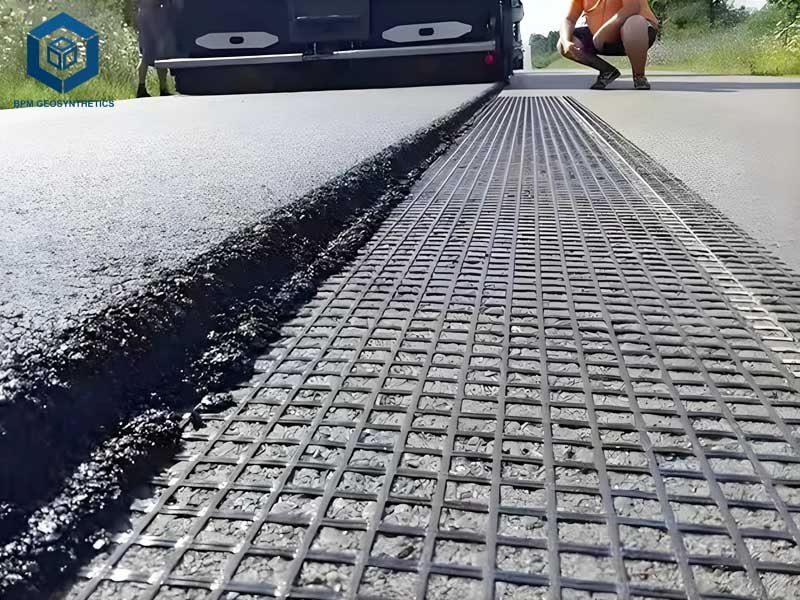
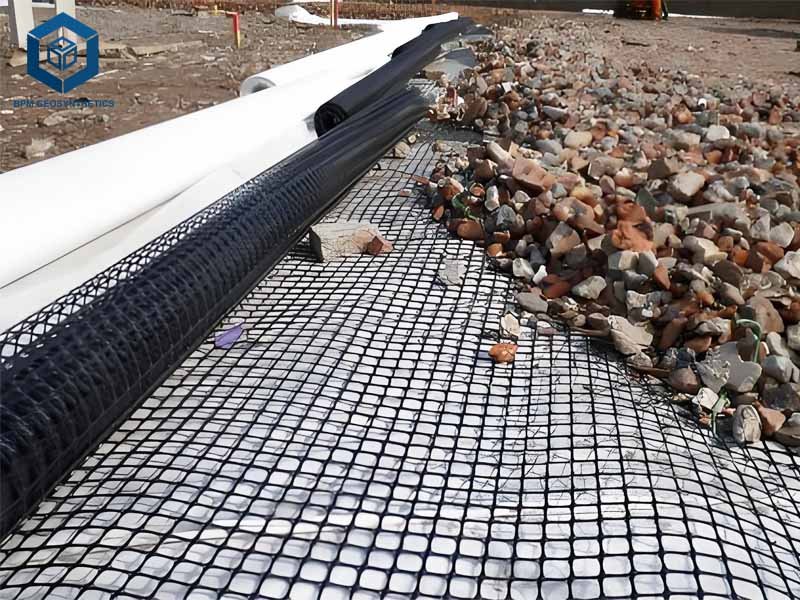
2. Factors Influencing Geogrid Cost per Square Meter
Geogrid costs in 2025 range from $0.50 to $7.00 per square meter, driven by material, type, manufacturing, and project-specific factors. Below, we explore these influences in detail.
2.1 Geogrid Cost per Square Meter – Material Type
The choice of material significantly impacts pricing:
- Polypropylene (PP): Lightweight and versatile, priced at $0.80–$3.50/m². PP dominates 40% of the market due to its affordability and chemical resistance.
- Polyester (PET): Offers high tensile strength and creep resistance, priced at $1.00–$4.00/m². Ideal for retaining walls and embankments.
- High-Density Polyethylene (HDPE): Costs $0.50–$3.00/m², offering high chemical resistance but lower flexibility.
- Carbon Fiber: Premium option at $2.50–$7.00/m², used in high-strength applications like railways.
Raw material costs, particularly PP, rose 7% in Q1 2025 due to crude oil price fluctuations, impacting low-end geogrid prices.
2.2 Geogrid Cost per Square Meter – Geogrid Type
Different geogrid types cater to specific applications, affecting costs:
- Uniaxial: $0.50–$4.00/m², designed for single-direction reinforcement in retaining walls and slopes.
- Biaxial: $0.50–$3.50/m², versatile for road bases and pavements due to bidirectional strength.
- Triaxial: $1.50–$5.00/m², offering superior load distribution for complex projects like heavy-duty pavements.
Triaxial geogrids, like Tensar’s InterAx, cost more but reduce aggregate thickness by up to 9 inches, saving 44% on overall project costs.
2.3 Geogrid Cost per Square Meter – Manufacturing Process
Production methods influence costs:
- Extrusion: Common for PP and HDPE geogrids, cost-effective at $0.50–$3.00/m² due to consistent aperture sizes.
- Knitting/Weaving: Used for PET uniaxial geogrids, increasing costs to $1.00–$4.00/m² due to labor-intensive processes.
- Coating: PVC or bitumen coatings for UV and chemical resistance add 5–10% to costs, typically for high-end products.
2.4 Geogrid Cost per Square Meter – Project Scale and Order Volume
Bulk purchases reduce costs significantly. Orders exceeding 10,000 m² from suppliers like BPM Geosynthetics can secure 10–20% discounts. Small-scale projects may face higher per-unit costs due to minimum order quantities (500–5,000 m²).
2.5 Geogrid Cost per Square Meter – Regional and Supplier Variations
Prices vary by region due to labor, transportation, and market dynamics:
- North America: $1.00–$5.00/m², driven by high infrastructure demand and labor costs.
- Asia-Pacific: $0.50–$3.00/m², benefiting from low-cost production in China and India.
- Europe: $1.00–$7.00/m², reflecting stringent quality standards and higher labor costs.
Suppliers like Tensar and BPM Geosynthetics charge premiums for certified products, while local manufacturers offer competitive pricing but may lack certifications.
2.6 Geogrid Cost per Square Meter – Certifications and Quality Standards
Geogrids meeting ASTM D6637 or ISO 9001 standards cost 10–15% more but ensure 95% reliability, reducing risks of project failure. Non-certified geogrids are cheaper but may lead to defects, costing $50,000–$200,000 in repairs.
2.7 Geogrid Cost per Square Meter – Installation and Logistics
Installation costs, including labor and equipment, add 15–30% to total expenses. For example, proper placement with 300–600 mm overlaps increases material costs by 10% but reduces damage by 15%. Remote locations or harsh weather conditions can raise logistics costs by 2–3 times.
3. Geogrid Price Range in 2025
Based on 2025 market data, geogrid prices range from $0.50 to $7.00 per square meter:
- Uniaxial Geogrids: $0.50–$4.00/m², with lightweight options (20 kN/m) at $0.50–$1.50/m² and high-strength (100–200 kN/m) at $2.00–$4.00/m².
- Biaxial Geogrids: $0.50–$3.50/m², with standard options (20–30 kN/m) at $0.50–$2.00/m² and heavy-duty (50–80 kN/m) at $2.00–$3.50/m².
- Triaxial Geogrids: $1.50–$5.00/m², used in complex projects requiring multi-directional strength.
For example, a 10,000 m² order of biaxial PP geogrid at $1.50/m² costs $15,000, while a 1,000 m² order of triaxial geogrid at $3.00/m² costs $3,000.
Price Comparison by Supplier
- Tensar: $1.00–$5.00/m² for InterAx triaxial geogrids, offering 44% cost savings through reduced aggregate use.
- BPM Geosynthetics: $0.50–$3.50/m² for biaxial and uniaxial geogrids, with 20-day shipping to 86+ countries.
- Taian Dingkun: $0.50–$3.00/m² for PP biaxial geogrids, meeting ISO 9001 standards.
- BlueStone Supply: $0.50–$4.00/m² for uniaxial geogrids, ideal for retaining walls.
Bulk orders over 10,000 m² can reduce costs by 10–20%, and local sourcing cuts transportation expenses by 15%.
4. Market Trends Impacting Geogrid Prices
The geogrid market is evolving, influenced by several trends:
Sustainability and Eco-Friendly Materials
Eco-friendly geogrids made from recycled PP or PET are gaining traction, increasing costs by 5–10% due to R&D. These align with EU sustainability standards, reducing emissions by 10%. For example, BPM Geosynthetics offers recycled PP geogrids at $0.80–$3.50/m².
Infrastructure Growth
Asia-Pacific, with a 40% market share, drives demand due to urbanization projects in China and India, stabilizing prices at $0.50–$3.00/m².
Technological Advancements
Triaxial geogrids, like Tensar’s InterAx, enhance load distribution by 15%, increasing costs by 10–15%. Sensor-embedded geogrids for real-time monitoring add 20% to costs but reduce maintenance by 10%.
Supply Chain Dynamics
Petroleum price volatility raised PP costs by 7% in Q1 2025. Geopolitical tensions and shipping delays may increase prices by 5% in 2025.
5. Applications and Cost Benefits
Geogrids offer significant cost savings compared to traditional methods, reducing material costs by 10–30%. Key applications include:
Road Construction
Biaxial geogrids ($0.50–$3.50/m²) reduce aggregate thickness by 15%, saving $50,000–$200,000 on highway projects. A 2024 UK project using Tensar InterAx saved 44% on aggregate costs.
Retaining Walls
Uniaxial geogrids ($0.50–$4.00/m²) enhance stability, reducing excavation costs by 20%. A 2024 US landfill project used Miragrid 5XT at $2.00/m², saving $100,000.
Slope Stabilization
Uniaxial geogrids ($0.50–$4.00/m²) reduce erosion by 50%, cutting maintenance costs by 20%. A 2024 Brazilian project saved $150,000 in erosion repairs.
Landfill Liners
Geogrid-reinforced geomembranes ($2.50–$7.00/m²) ensure 95% leachate containment, saving $100,000–$500,000 in cleanup costs.
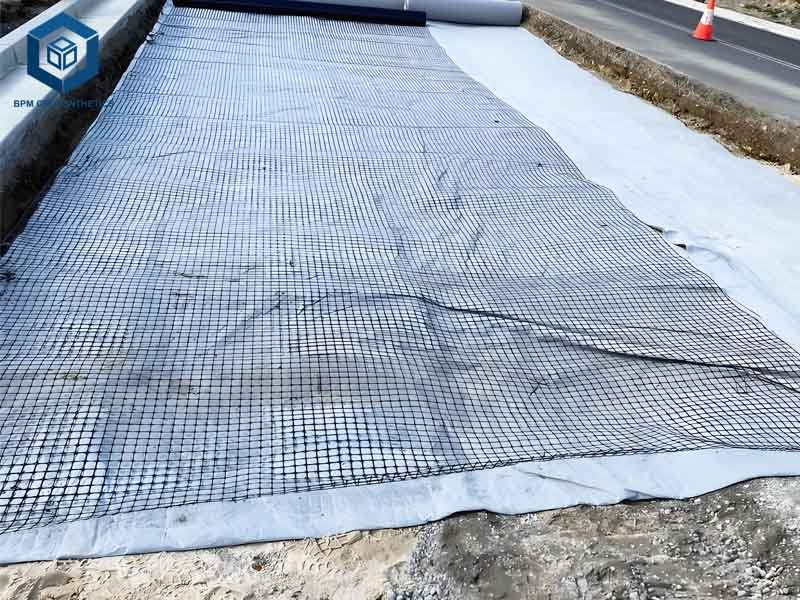
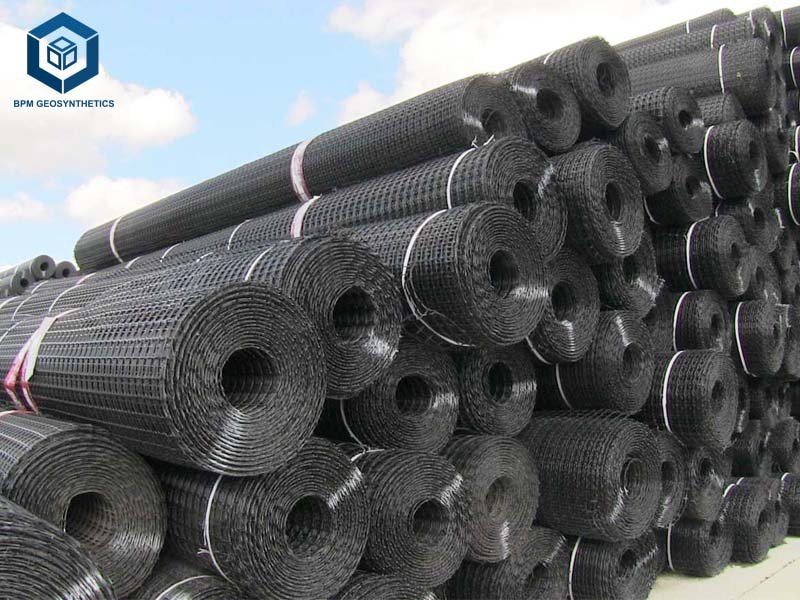
6. Case Studies: Real-World Cost Examples
UK Road Stabilization Project (2024)
Tensar supplied 20,000 m² of InterAx triaxial geogrids at $3.00/m², reducing aggregate thickness by 9 inches and saving $200,000 in material costs.
US Landfill Slope Project (2024)
Miragrid 5XT uniaxial geogrids at $2.00/m² were used for a 15,000 m² landfill slope, saving $100,000 by reducing excavation needs.
Australian Pavement Project (2024)
BPM Geosynthetics supplied 5,000 m² of biaxial geogrids at $1.20/m², reducing aggregate use by 15% and saving $30,000.
7. Choosing the Right Geogrid for Your Project
Selecting the appropriate geogrid involves balancing cost and performance:
- Road Bases: Biaxial geogrids ($0.50–$3.50/m²) with 20–30 kN/m tensile strength.
- Retaining Walls: Uniaxial geogrids ($0.50–$4.00/m²) with 50–200 kN/m tensile strength.
- Complex Projects: Triaxial geogrids ($1.50–$5.00/m²) for multi-directional reinforcement.
- High-Load Applications: PET or carbon fiber geogrids ($1.00–$7.00/m²) for railways or airports.
Consult suppliers like Tensar, BPM Geosynthetics, or BlueStone Supply for tailored quotes and project-specific recommendations.
8. Future Outlook for Geogrid Prices
The geogrid market is projected to reach USD 1.97 billion by 2032, driven by:
- Sustainability: Recycled geogrids will increase prices by 5–10% but align with green standards.
- Infrastructure Demand: Asia-Pacific’s urbanization will stabilize prices at $0.50–$3.00/m².
- Technological Innovation: Advanced geogrids with enhanced load distribution will raise premium prices to $5.00–$7.00/m².
9. Conclusion
Geogrid prices in 2025 range from $0.50 to $7.00 per square meter, influenced by material, type, manufacturing, installation, and regional factors. By leveraging bulk ordering, local sourcing, certified suppliers, lifecycle cost analysis, and proper installation, you can save 10–30% while ensuring durable, high-performance solutions.
For tailored quotes and expert guidance, contact reputable suppliers like BPM Geosynthetics, who meet ASTM and ISO standards. With the geogrid market poised for growth, strategic choices today will optimize budgets and enhance project outcomes for decades.

